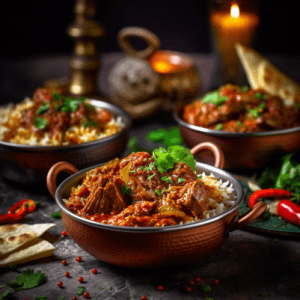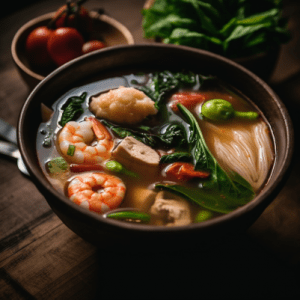Please note that some of the links on this website are affiliate links. I will earn a commission if you decide to make a purchase after clicking through the link. As an Amazon Associate I earn from qualifying purchases.
Welcome to our chef’s guide to cooking with nettles! Nettles are a versatile ingredient that can add great flavor to your dishes while also providing many nutritional benefits. In this guide, we’ll explore what nettles are, how to harvest and prepare them, their culinary uses, and much more. Whether you’re a seasoned chef or a home cook, we have recipes and tips that will help you make delicious dishes with this unique ingredient. Let’s dive in!
What Are Nettles?
Nettles are a type of herbaceous plant commonly found in many parts of the world. They are known for their stinging hairs, which can cause a mild irritation or rash if they come into contact with bare skin. Despite this, nettles are a highly nutritious plant that are valued for their culinary and medicinal properties.
Nettles are typically green in color and have a pointed, serrated leaf shape. They can grow up to six feet tall and thrive in moist, nutrient-rich soils. The plant’s stems, leaves, and roots are all used for various purposes, including culinary, medicinal, and textile applications.
Nettles have a slightly bitter taste and are often compared to spinach or kale. They are high in vitamins and minerals, particularly iron, calcium, and vitamins A and C. Additionally, they contain antioxidant compounds that may help to reduce inflammation and promote overall health.

Harvesting Nettles
If you’re planning to cook with nettles, the first step is to harvest them. Nettles are typically foraged in the wild, so it’s important to know what you’re looking for and where to find them.
When harvesting nettles, be sure to wear gloves to protect your hands from stings. Look for young nettles, which are less bitter and more tender than older plants. You can typically find nettles growing in damp, shaded areas such as along riverbanks or in wooded areas.
To harvest the nettles, use a pair of scissors or gardening shears to snip off the top of the plant, including the leaves and stem. It’s best to avoid the base of the plant, where the sting is most potent.
Once you’ve harvested your nettles, be sure to wash them thoroughly to remove any dirt or debris. You can do this by submerging them in a large bowl of cold water and swishing them around, being careful not to crush the leaves or stems.
Overall, with a little bit of knowledge and some careful foraging, harvesting nettles is a simple and rewarding process that can open up a whole new world of culinary possibilities.
Nettles in the Kitchen
Nettles are a versatile ingredient that can be used in a wide range of dishes, from soups and stews to pastas and sauces. Here are some popular culinary uses of nettles:
| Culinary Use | Description |
|---|---|
| Soup and Stews | Nettles can add a unique flavor and texture to soups and stews. They work particularly well in creamy soups, such as potato and nettle soup. |
| Pasta and Risottos | Nettles can be used to make delicious and nutritious pasta dishes and risottos. Try adding blanched nettles to your favorite pasta sauce or incorporating them into a creamy risotto. |
| Sauces and Pesto | Nettles can be transformed into delicious sauces and pestos that pair well with meat, fish, and vegetables. Nettle pesto, made with pine nuts, garlic, and parmesan cheese, is a popular choice. |
Nettle Risotto Recipe
Here’s a simple recipe for nettle risotto that’s sure to impress your dinner guests:
- Heat 4 tbsp of olive oil in a saucepan and add 1 finely chopped onion. Cook for 5 minutes until soft.
- Add 1 cup of arborio rice and stir for 2-3 minutes until coated in the oil. Add 1/2 cup of white wine and stir until the liquid is absorbed.
- Add 4 cups of vegetable stock, one cup at a time, stirring continuously until the rice is cooked (around 20 minutes).
- Meanwhile, blanch 2 cups of nettles in boiling water for 1-2 minutes. Drain and roughly chop.
- Stir the chopped nettles into the risotto along with 1/2 cup of grated parmesan cheese.
- Season with salt and pepper to taste and serve immediately.
Whether you’re a seasoned chef or a beginner in the kitchen, nettles offer a unique and flavorful ingredient that’s sure to take your dishes to the next level.
Preparing Nettles for Cooking
Nettles can be a prickly ingredient to work with, but with some proper preparation, they can be a delicious addition to your favorite dishes. Here are some tips on how to prepare nettles for cooking:
- Removing Stingers: Nettles are covered in tiny stinging hairs, so it’s important to wear gloves while handling them to avoid getting stung. Use scissors to cut off the leaves from the stem and discard the stem.
- Blanching: Once you have removed the stingers, blanch the leaves in boiling water for 1-2 minutes to make them less fibrous and more tender. Then, shock them in ice water to stop the cooking process and preserve their bright green color.
Nettles can be used in a variety of culinary techniques, including:
- Sautéing
- Steaming
- Incorporating into soups and stews
When cooking with nettles, it’s important to remember that they will shrink down significantly in size, so be sure to use more than you think you will need.
“Nettles can be a prickly ingredient to work with, but with some proper preparation, they can be a delicious addition to your favorite dishes.”
Nettles as a Nutritional Powerhouse
Nettles are a powerhouse of nutrition, containing various vitamins and minerals that can boost overall health. They are particularly rich in iron, calcium, and vitamin C, making them an excellent addition to any diet. In fact, nettles have been used for centuries as a natural remedy for various ailments, including anemia and arthritis.
Iron: Nettles are an excellent source of iron, a mineral that is essential for the production of hemoglobin, the protein in red blood cells that carries oxygen throughout the body. Getting enough iron in your diet can help prevent anemia, a condition that causes fatigue, weakness, and shortness of breath.
Calcium: Nettles are also a great source of calcium, a mineral that is essential for strong bones and teeth. Getting enough calcium in your diet can help reduce the risk of osteoporosis, a condition that causes bones to become weak and brittle.
Vitamin C: Nettles are packed with vitamin C, an antioxidant that helps protect cells from damage caused by free radicals. Vitamin C is also essential for the production of collagen, a protein that helps keep skin healthy and youthful.
In addition to these nutrients, nettles also contain various other vitamins and minerals, including vitamin K, vitamin A, and magnesium.
Storing and Preserving Nettles
Properly storing and preserving nettles is essential to ensure their freshness and availability throughout the year. Here are some tips to help you make the most of your nettle harvest:
- Refrigeration: Store fresh nettles in the refrigerator for up to three days in a plastic bag or wrapped in a damp towel.
- Freezing: Blanch nettles for two minutes in boiling water, then plunge them into an ice bath. Once cooled, remove the excess water and freeze in portions that suit your needs.
- Drying: Hang nettles upside down in a warm, dry place until they are crispy and dry. Then, store in an airtight container until needed.
Remember to label your stored nettles with the date of harvest to monitor their freshness. If properly stored, frozen nettles can last up to six months, while dried nettles can last up to a year.
Nettles in Season
Nettles are a seasonal ingredient, with each season presenting unique opportunities for foraging and using them in culinary creations.
In spring, young and tender nettles are the most common. These are often preferred for their delicate flavor and can be used in a variety of dishes, such as pesto, soups, and pasta.
During the summer months, nettles can sometimes be harder to come by, as they can become more fibrous and less desirable. However, if you can find them, consider using them in an herbal tea or incorporating them into a fresh salad.
Autumn is an excellent time to harvest nettles as they typically grow in abundance and have a richer flavor. They can be used to make warming soups and stews or sautéed with butter and garlic as a side dish.
Winter is a dormant season for nettles, so they may be harder to find during this time. However, dried nettles can be used for herbal teas and supplements to enjoy their nutritional benefits year-round.
It’s important to note that the timing of the season can also vary depending on your location and climate, so be sure to research the best time to forage for nettles in your area.
FAQ about Cooking with Nettles
Are you curious about cooking with nettles? Here are some commonly asked questions and helpful tips:
Are all nettles edible?
No, not all nettles are edible. It is important to properly identify the plant before consuming it. Stinging nettles (Urtica dioica) are the most common edible variety, but there are other types of nettles that are not safe to eat.
Can nettles be used in desserts?
Yes, nettles can be used in desserts. They have a slightly sweet and earthy flavor that can complement many desserts, such as nettle ice cream or nettle-infused honey. However, be sure to properly prepare the nettles and remove the stingers before incorporating them into your dessert recipes.
How do I avoid getting stung when harvesting nettles?
Wearing gloves and long sleeves can help protect you from getting stung while harvesting nettles. Use scissors or pruning shears to cut the nettles instead of pulling them out of the ground. And be sure to harvest young and tender leaves, as older leaves can be tough and bitter.
What dishes work well with nettles?
Nettles can be used in a variety of dishes, including soups, stews, pasta dishes, quiches, and even smoothies. They pair well with other spring vegetables such as asparagus and peas, and can also be flavored with garlic or lemon.
How long do nettles last in the refrigerator?
Nettles can last up to a week in the refrigerator if stored properly. To keep them fresh, place them in a plastic bag with a damp paper towel and store in the vegetable drawer. You can also blanch and freeze nettles to extend their shelf life.
Are there any health benefits to eating nettles?
Yes, nettles are a nutritional powerhouse. They are high in vitamins A, C, and K, as well as calcium and iron. They also have anti-inflammatory and antioxidant properties, and may help alleviate symptoms of allergies and arthritis.
We hope these tips help you in your cooking adventures with nettles!












